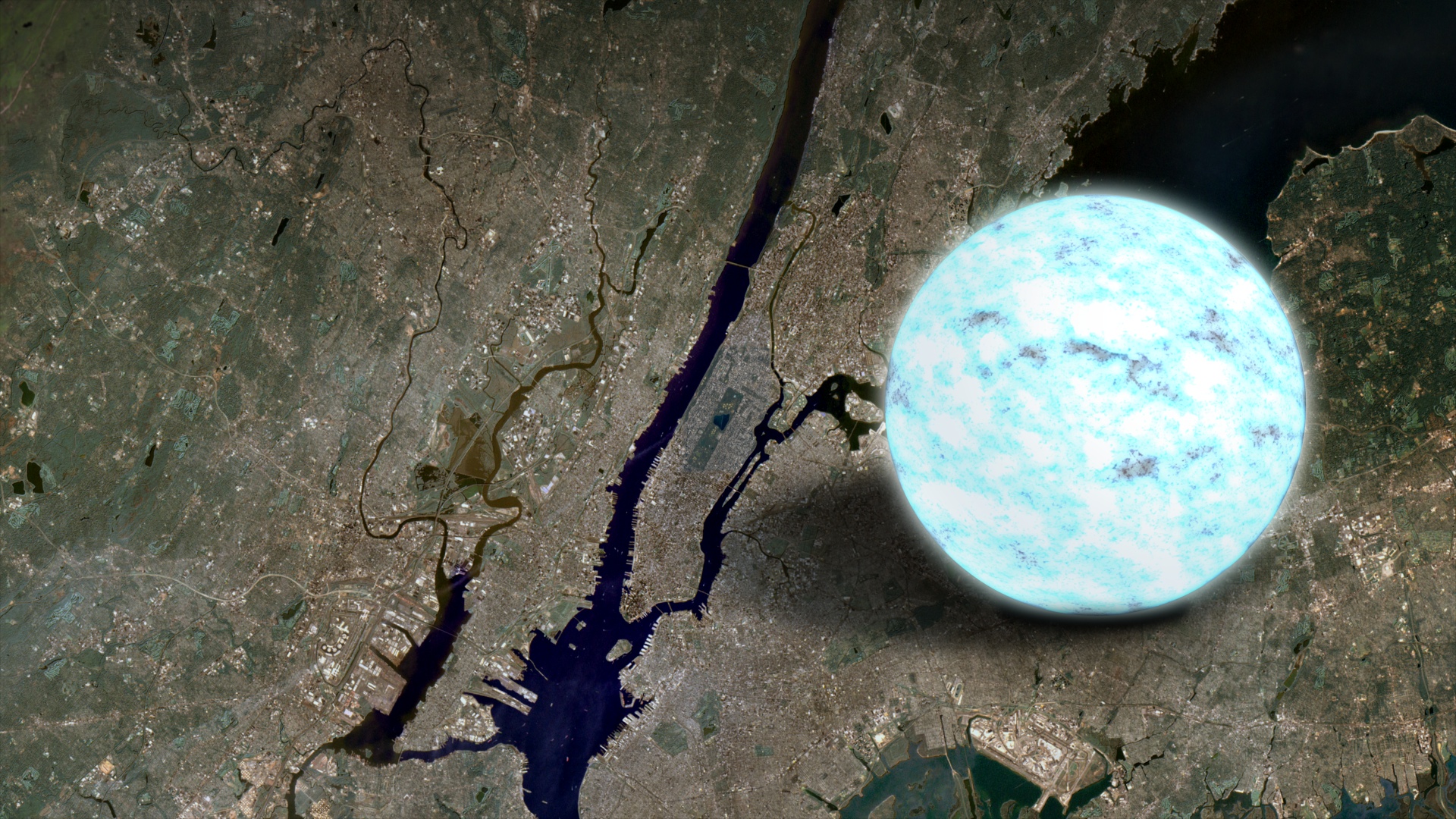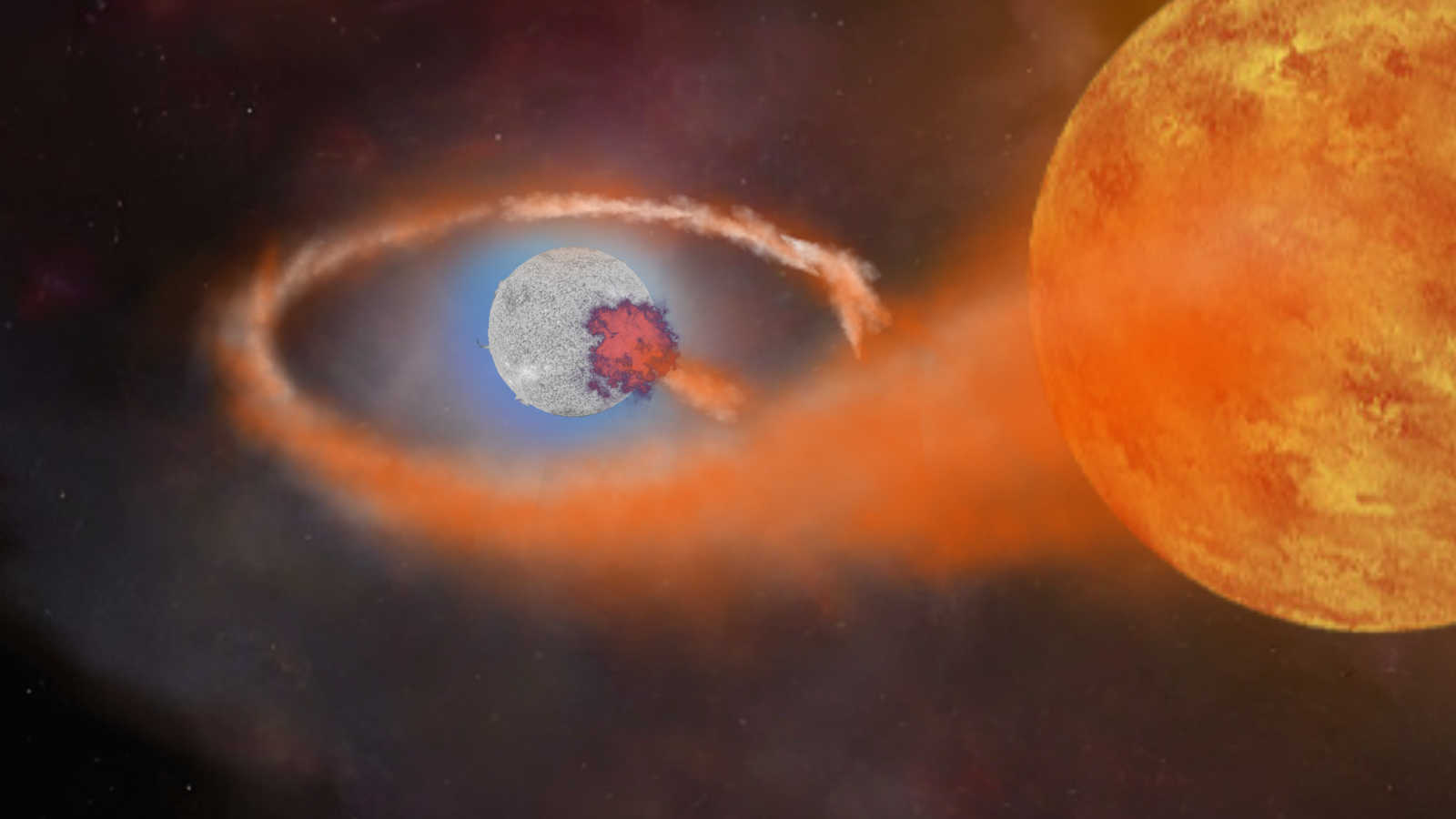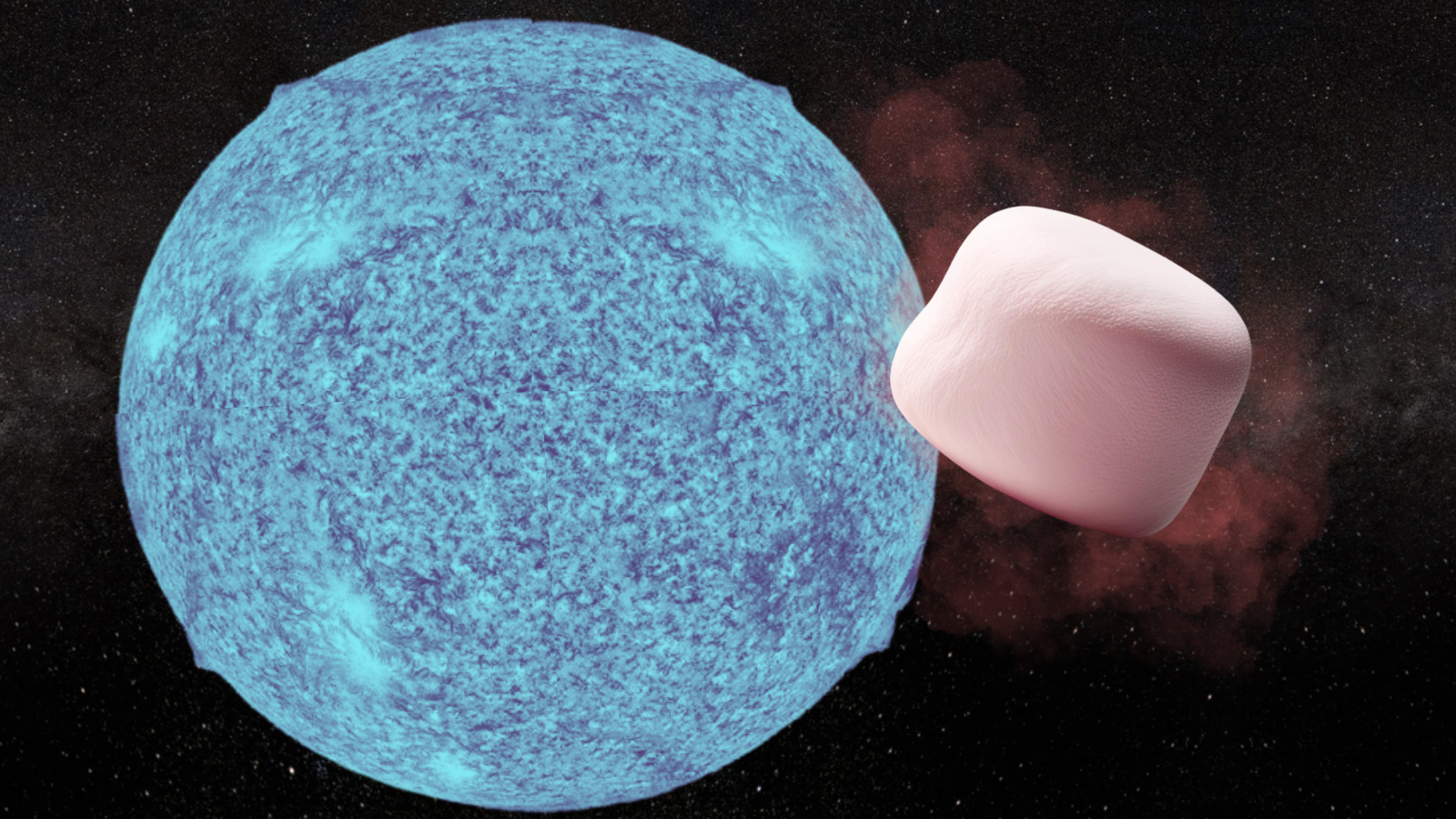Astronomers have found a “useless star” neutron star is spinning at an unbelievable 716 instances a second, making it the joint fastest-spinning cosmic physique ever seen. Not solely this, however the neutron star’s floor can be erupting with explosions as highly effective as detonating atomic bombs.
The workforce found the intense stellar remnant utilizing NASA’s X-ray telescope Neutron star Inside Composition Explorer (NICER), which is mounted on the outside of the Worldwide House Station (ISS).
The exploding pace demon neutron star in query is a part of the binary system 4U 1820-30, which sits within the globular cluster NGC 6624, which is situated towards the guts of the Milky Approach round 26 light-years from Earth within the constellation of Sagittarius.
“We have been learning thermonuclear explosions from this technique after which discovered exceptional oscillations, suggesting a neutron star spinning round its middle axis at an astounding 716 instances per second,” workforce member Gaurava Ok. Jaisawal of DTU House stated in a press release.
In the case of its rotation fee, the one physique that comes near the neutron star in 4U 1820-30 is one other neutron star, PSR J1748–2446, which additionally spins 716 instances a second, or 42,960 instances per minute.
The opposite occupant of the 4U 1820-30 binary is one other stellar corpse, a white dwarf, the form of remnant that stars with lots similar to the solar depart behind once they die. This white dwarf can be a speedster, whipping round its neutron star companion as soon as each 11 minutes! Which means that is the binary star system with the shortest orbital interval ever seen.
Neutron stars like these talked about above type when way more huge stars, with a minimum of 8 instances the mass of the solar, run out of the gas for nuclear fusion. Stellar loss of life is essential to understanding the intense properties of neutron stars, reminiscent of their fast fee of spin and the thermonuclear explosions that rock their floor.
What makes neutron stars so excessive?
When a large star runs out of gas and may now not fuse parts to create progressively heavier parts in its core, the outward power or “radiation stress” that has supported it in opposition to the inward push of its personal gravity for billions of years ceases.
This causes the core of this star to quickly collapse beneath its personal gravity, sending shockwaves rippling out into the dying star’s outer layers. This triggers a supernova explosion that rips away these outer layers and, thus, many of the star’s mass.
This leaves the star’s core as a stellar corpse with a mass between 1 and a pair of instances that of the solar. This new child (or is it newly deceased?) neutron star has a width of simply round 12 miles (20 kilometers). It’s the fast compression in diameter that causes neutron stars to spin quickly.

That is the results of the conservation of angular momentum, and a really Earthly analogy can describe it. Image an ice skater spinning on the ice. To extend the pace of their spin, the skater attracts of their arms, and to decelerate once more, they unfold their arms out. This occurs for neutron stars, albeit on a vastly higher cosmic scale.
Neutron stars also can get a lift in rotation pace when they’re in a binary tight sufficient to gravitationally drag matter from their companion or “donor” star. This matter carries with it angular momentum that additionally boosts the spin pace of the neutron star. This stolen matter can be key to understanding why neutron stars can erupt in thermonuclear explosions.

As you may think, cramming the mass of two suns down right into a physique that might match inside the border of Manhattan Island has excessive penalties. This fast compression forces negatively charged electrons and positively charged protons collectively, making a sea of impartial particles referred to as neutrons that fill neutron stars.
This matter is the densest within the recognized universe. In actual fact, it’s so dense that if a teaspoon of neutron star matter have been scooped out and delivered to Earth, it might weigh 10 million tons, the identical as about 85,000 blue whales.
With this unbelievable density comes an extremely sturdy gravitational affect. Which means when matter heads towards a neutron star, it’s accelerated to speeds of hundreds of thousands of miles per hour. Thus, when it hits the floor of a neutron star, this matter releases an unbelievable quantity of power.
To place that into context, if a marshmallow have been dropped to the floor of a neutron star, it might hit with the power of a thousand hydrogen bombs exploding concurrently.

Moreover, when this stolen stellar matter piles up on the floor of a neutron star, it might probably attain essential mass and detonate in a violent thermonuclear explosion.
“Throughout these bursts, the neutron star turns into as much as 100,000 instances brighter than the solar, releasing an immense quantity of power,” workforce member and DTU House scientist Jerome Chenevez stated within the assertion. “So we’re coping with very excessive occasions, and by learning them intimately, we get new insights into the exiting life cycles of binary star programs and the formation of parts within the universe.”
NICER noticed the binary system 4U 1820-30 between 2017 and 2021, throughout which period the DTU House workforce noticed 15 thermonuclear blasts through the X-ray gentle they produced.
Considered one of these explosions carried a signature that scientists name “thermonuclear burst oscillations,” which had a frequency of 716 Hz. As a result of these burst oscillations are in lockstep with the spin fee of neutron stars, this confirmed this physique is spinning 716 instances a second.
“If future observations verify this, the 4U 1820-30 neutron star could be one of many fastest-spinning objects ever noticed within the universe, matched solely by one other neutron star referred to as PSR J1748–2446,” Jaisawal stated.
The workforce’s analysis was printed on October 25, 2024, in The Astrophysical Journal.





